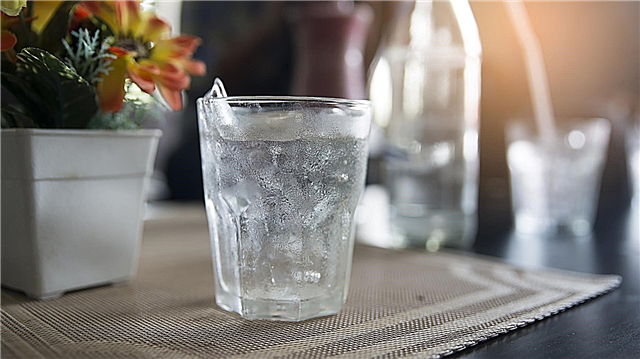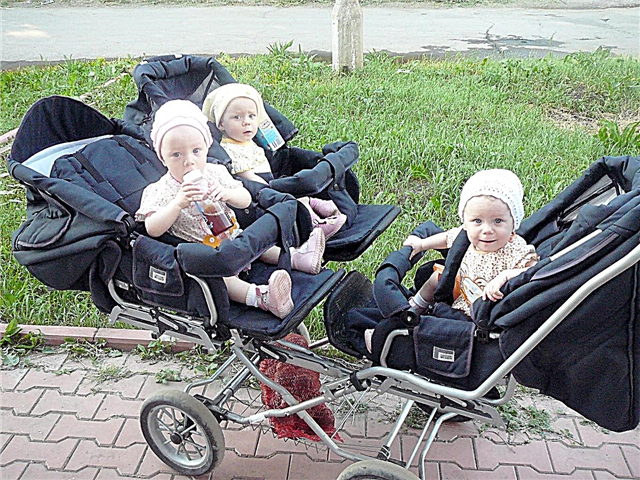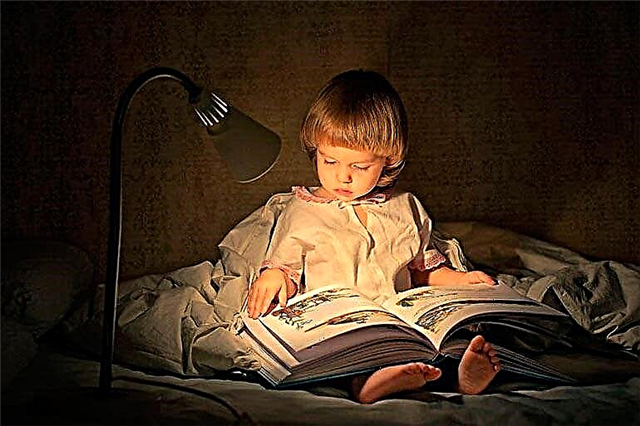Every mother knows how mobile children are. The cognitive activity of babies is very high. The child must constantly move, explore the world and learn new things. Fractures of a child's leg or arm are common and very common things. But, unfortunately, the high energy of the child, the insufficiently developed vestibular apparatus and the imperfect sense of balance often lead to trauma. Often, the little one falls, gets bruises, abrasions and even fractures.
What are the most common injuries for children?
It depends on the age and psychophysical development of the child. Household injuries, falls, burns are more common among preschoolers. Children of school age are dominated by street and even traffic injuries. Fast riding on bicycles, skateboards, rollerblades, non-observance of traffic rules leads to serious consequences.
Features of child injuries
Children are not a miniature copy of an adult. In the structure of the child's body, as well as in the musculoskeletal system, there are a number of features. Many injuries typical of children are never seen in adults, and vice versa. Why it happens?
High percentage of soft tissue
 In a growing body, the content of cartilage, adipose and muscle tissue is greater than in adults. This feature has a protective function, so bones in babies break much less often than in similar situations in adults.
In a growing body, the content of cartilage, adipose and muscle tissue is greater than in adults. This feature has a protective function, so bones in babies break much less often than in similar situations in adults.
High elasticity and firmness of tissues
Due to the strength and elasticity of the periosteum, displaced fractures are rare. The periosteum, as it were, “holds” the fragments inside, such fractures are called the “green branch” or “rubber tube” type.
What is a periosteum and why is it necessary? The periosteum is a dense membrane that completely covers the bone. It is perfectly vascularized, supplied with blood, which means it nourishes the surface layers of the bone. Thanks to the periosteum, the bone grows in thickness.
High elasticity of the ligaments
The ligamentous apparatus of children is highly elastic. Therefore, sprains and overstretching of ligaments are much more common than ruptures, and dislocations under 5 years of age are practically not found.
Special mineral composition of bones
The bones of children are thin, but they contain a lot of organic matter. Bones have great elasticity and flexibility, which also prevents fractures.
How does bone grow? The growth zone is a cartilaginous layer. It is located between the articular part of the bone (pineal gland) and the extension at the end of the bone (metaphysis) and allows the bone to grow in length.
Bone fractures in the growth zone
Such lesions are found only in children. But it is very difficult to identify them, because the cartilage tissue is not visible on an X-ray. These are serious injuries that require correct, qualified treatment, accurate surface matching.
Cartilage damage
 Cartilage tissue is not characterized by fractures due to its homogeneous structure and elasticity. But under mechanical action, the structure of the cartilage, its properties and content can change, the movement and resorption of cartilage is possible.
Cartilage tissue is not characterized by fractures due to its homogeneous structure and elasticity. But under mechanical action, the structure of the cartilage, its properties and content can change, the movement and resorption of cartilage is possible.
High regenerative capacity
In the affected area, callus forms over time, which is replaced by bone tissue without scarring. And the rapid growth rates of the child are allowed to leave a "permissible offset" that can correct itself over time.
Types of injury in children
The most common injuries in children include contusion, dislocation, sprain, or fracture.
- Injury. How to distinguish a bruise from a fracture and other injuries? In case of injury, tissue damage is small, and their structure is not changed. Pain is the main symptom of a bruise, but it is moderate, the baby quickly calms down. The shape of the limb and function is not significantly changed. There may be a bruise. The bruise resulting from the impact permeates the tissue evenly. The child's condition is not significantly disturbed, he soon forgets about the trouble.
- Sprain. This lesion is typical for children over 3 years old, and the typical localization is the ankle ligaments. Often the kid earns this injury while running, especially on the steps, when the foot is tucked inward. Painful sensations during sprains are acute, but the pain gradually subsides. There is swelling, swelling in the joint area. Movement in the foot is possible, but attempts to stand on the leg are accompanied by acute pain.
- Dislocation. Often occurs when a child falls and is characterized by a violation of the usual contours of the joints. In case of dislocation, the possibility of movement in the joint is sharply limited. The shape of the limb changes, it is deformed, shortened or lengthened. Local symptoms are quite pronounced: pain, swelling, bruising. In children about 2 years of age, subluxation of the radius in the elbow joint, "dislocation from extension", is common. It occurs when an adult firmly holds the baby by the hand, and the child suddenly stumbles. With such an injury, the baby cries, spares his hand, holds it along the body.
- Fracture in a child. Fracture - damage to the bone, violation of its integrity as a result of mechanical stress.
We will talk about this type of injury in more detail.
The main causes of fractures
- falling;
- household injuries;
- awkward movements;
- diseases leading to a violation of the integrity of the bones;
- mutilation.
Depending on the type of fracture, its manifestations differ, but the main symptoms are similar.
Clinical manifestations of a fracture
- pain that increases with movement of the limb, palpation, touch;
- deformation of the affected limb;
- unnatural position of the arm or leg, attempts to bring the limb to a physiological position lead to severe pain;
- swelling at the site of the fracture, which grows very quickly;
- hematoma, bruise in the affected area.
Do not forget that any trauma is a defeat of the whole organism as a system. The body responds to damage both with local reactions (pain, hyperemia, swelling) and general (weakness, malaise, fever). With severe multiple fractures, injuries of internal organs, even traumatic shock may develop.
Diagnostics
 How can a fracture be distinguished from other types of injury? To diagnose this type of injury, you need to know how the child was injured, under what circumstances. But the parents were not always witnesses to an unpleasant situation. A traumatized child, especially a young child, will not be able to coherently tell the circumstances of the trauma.
How can a fracture be distinguished from other types of injury? To diagnose this type of injury, you need to know how the child was injured, under what circumstances. But the parents were not always witnesses to an unpleasant situation. A traumatized child, especially a young child, will not be able to coherently tell the circumstances of the trauma.
It is necessary to determine the extent of damage, local reactions, abrasions, wounds, hematomas. And then pay attention to the position of the limb, whether the child can move his fingers.
The clinical manifestations of fractures can be divided into probable and reliable. Possible signs that help suspect a fracture include swelling, hematoma, and dysfunction. Reliable, which to a large extent speak of the presence of a fracture, include the feeling of crunching of bone fragments, deformation of the limb.
You should always pay attention to the color of the skin around the injury, the mobility of the fingers and feet. A formidable sign is paleness or cyanosis of the fingers, combined with the absence of voluntary movements. This may indicate damage to a large vessel or nerve.
 Also a serious symptom is a lack of pulse and discomfort in the limb, tingling, burning, feeling of "goose bumps". In such cases, it is necessary to take the child to a hospital as soon as possible.
Also a serious symptom is a lack of pulse and discomfort in the limb, tingling, burning, feeling of "goose bumps". In such cases, it is necessary to take the child to a hospital as soon as possible.
In children, severe, open fractures (when the skin over the lesion is damaged and a portion of the bone is visible) rarely occurs. The danger of infection in such cases is great. Even less common are gunshot, infected fractures that require serious, long-term treatment. Fractures of the arms of the "green twig" or "vine" type are more common and can be difficult to recognize.
An x-ray will help to pinpoint the type of damage. Only by confirming radiographically, you can be unequivocally confident in the correctness of the diagnosis. Rarely, in controversial cases, it is necessary to resort to magnetic resonance imaging.
What can be seen on an X-ray?
- the presence of a bone fracture;
- location of the fracture;
- is there a displacement, is it significant;
- single fracture, or there are several fragments;
- what is the fracture line.
The main types of fractures in children
Broken leg in a child
- Fracture of the femoral neck. Sharp, unbearable pain in the hip joint, shortening of the affected limb. The leg is in an unnatural position - turned outward. And in the groin, hematomas and swelling can be replaced. Such symptoms indicate a displaced hip fracture. If there is no displacement, the clinical picture is erased, the child can even walk.
- Patella fracture. It is characterized by knee pain, swelling, possibly hemorrhage in the knee joint. Leg function is impaired, and attempts to bend the leg cause severe pain. If the fragments are more than 5 mm apart, the support function suffers, the child cannot stand on his leg.
- Fracture of the shin bones. With a fracture of both bones of the lower leg (peroneal and tibial), deformation of the limb, sharp pain, swelling and pathological mobility of the limb are noticeable. If one bone is affected, the deformity is less pronounced, active movements in the leg are preserved. It turns out that the fracture of the leg, depending on the number of bone fragments and their location, can be classified as light or heavy.
- Fracture of the bones of the foot. In addition to local manifestations of the fracture, the supporting and motor function is impaired. Movement in the foot or trying to stand on the leg leads to severe pain.
- Fracture of the calcaneus. The position of the limb is changed - the heel is turned outward. There is swelling and soreness, impossibility of movement in the ankle joint.
- Fractured toes. The fingers look unnatural, swollen, painful when moving. Under the nails - cyanosis, hematomas. The child cannot stand up.
Broken arm in a child
Fractures of the upper limbs in children are 2 times more common than the lower ones. With a major fracture, it is easy to make an accurate diagnosis. But for children, lesions are more characteristic in which the function of the hand is slightly impaired. A fracture can easily be mistaken for a bruise or dislocation. The most common localization is in the bones of the elbow joint and forearm.
Urgent care
Dr. Komarovsky shares his advice on providing emergency care.
What should be done:
- If there is bleeding, the first step is to stop it by applying a pressure bandage.
- Immobilize, fix the limb. Attach any flat object at hand with a bandage or cloth to the affected area.
- Apply cold.
- Transport the child to the emergency room immediately.
What not to do:
- Move the child until the limb is fixed, immobilized.
- Ask the victim to move, get up, change seats.
- Try to independently change the position of the limb - straighten, combine the fragments.
- Apply heat, rub, massage the damage.
Fracture treatment
A qualified trauma doctor will determine the type and amount of treatment required for each case individually. But there are basic principles for treating all fractures:
- Gentle approach, pain relief.
- Comparison of bone fragments is carried out in the shortest possible time, as quickly as possible.
- Surgical treatment if necessary.
- Fixation of the injured limb.
- Conducting functional treatment.
Non-traditional treatment and prayers for fractures are ineffective in healing. Spending time on traditional methods of treatment, you can miss precious minutes and harm your child. Only a qualified doctor can competently and correctly prescribe treatment.
Recovery period
How long the fracture heals depends largely on the age and the regenerative capacity of the patient's bone tissue. On average, the healing time for upper limb fractures is a month and a half, and for lower limb fractures, 1.5–2 months. Fusion of a fracture of the pelvic bones will take even more - from 2 to 3 months, and for the spine, the healing period will last up to 1 year, and full recovery - 2 years.
 Healing times also depend on the type of fracture and treatment tactics. For example, with a simple fracture of the shin bones, a plaster splint may be applied for a period of 6 to 7 weeks. But in cases where it is impossible to combine the fragments with your hands, they resort to reduction using skeletal traction for a period of 4 to 8 weeks, followed by plastering. This means that the healing time of the shin bones is doubled.
Healing times also depend on the type of fracture and treatment tactics. For example, with a simple fracture of the shin bones, a plaster splint may be applied for a period of 6 to 7 weeks. But in cases where it is impossible to combine the fragments with your hands, they resort to reduction using skeletal traction for a period of 4 to 8 weeks, followed by plastering. This means that the healing time of the shin bones is doubled.
After removing the plaster cast, an active recovery period begins. The best methods of therapy at this time are massage, exercise therapy, physiotherapy, swimming pool.
Do not forget about the correct nutrition of the child, the increased need for trace elements during the recovery period. Vitamin-mineral complexes, which include calcium, will increase regenerative processes and accelerate fracture healing.
In case of severe injuries, spa treatment and long-term rehabilitation may be required.
Conclusions
All children are injured. This is a payment for the curiosity and activity of the crumbs. No matter how loving and caring the parents are, they cannot protect the baby from all possible troubles.
The main task of parents is to recognize the trauma, be able to provide emergency care and, if necessary, transport it to a medical institution on time. The health and development of the child in the future depends on the correctness and speed of providing first pre-medical and medical aid.



